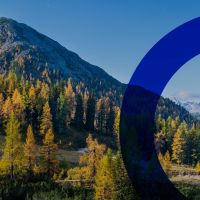Zurich, 27 October, 2023 – South Pole confirms that it has terminated its contract with Carbon Green Investments (CGI), the owner and developer of the Kariba REDD+ project, with immediate effect.
The termination follows careful consideration of the project, issues involved, and allegations that have been raised publicly. All activities related to carbon certification and carbon credits from the Kariba REDD+ project will now be the responsibility of CGI, and South Pole's role as the carbon asset developer has ended.
While South Pole is terminating its contract with CGI, it continues to believe in the significance of the Kariba REDD+ project for local communities, large-scale forest protection, and local biodiversity. It is important to mitigate any disadvantages to the project's beneficiaries emerging from the termination of this contract. As such, should any Zimbabwean authorities wish to draw on South Pole's technical support for a period of time to help Kariba REDD+ transition under the country's new national carbon regulations, South Pole is open to considering this. In the meantime, the project is expected to keep operating within Verra's requirements and safeguards.
The company and management are determined to learn from the experience of working with the Kariba REDD+ project. Management is well aware of the scrutiny that both the project and the wider voluntary carbon market is currently under. For these reasons, South Pole has, for over a year, been working on enhancing its group-wide quality control and due diligence processes.
A dedicated team has been redesigning our Quality Assurance system, which includes conducting annual quality control reviews for all projects. These reviews include periodic risk assessment, management, and corrective action planning. South Pole's latest Quality Assurance framework and quality risk reporting are aligned with latest guidance from the Integrity Council for the Voluntary Carbon Market (ICVCM). Specifically for REDD+ projects, internal baseline monitoring will now happen every three years, surpassing the current Verra requirement of every six years (previously, every 10 years). These improvements reinforce South Pole's commitment to working towards the highest market standards at all times, as they continue to evolve and improve.
A spokesperson at South Pole said:
“Kariba REDD+ is a pioneering and challenging project that has demonstrated the possibilities of large-scale forestry protection projects, from which governments can learn when developing national forest protection schemes.
“We are not confident that the project meets the high standards we expect from our partners all over the world. It is with great sadness that we have come to this conclusion, since we also believe that the Kariba REDD+ project sought to bring benefits both to the communities it supports and the forest and biodiversity it protects.
“Kariba REDD+ is one of the world's first large-scale REDD+ forest protection projects and we are proud to have played a role in its establishment, growth, and positive impact on climate change and forest preservation. Despite materially complying with the relevant Verra and Climate, Community & Biodiversity standard requirements at all stages of the project, we are disappointed with aspects of how the project was managed on the ground by the project owner. We have learnt from this experience and are proactively implementing stronger controls and processes.
“Funding climate action through nature-based projects remains key to reaching net zero emissions and protecting our vulnerable ecosystems. The carbon market is still in its early stages and South Pole remains committed to continuous learning, showing leadership in driving ever higher standards, and in encouraging new thinking that helps put better solutions on the table."
###
Note to editors
- South Pole was the carbon asset developer for the Kariba REDD+ project, which has been successfully certified and verified multiple times by Verra, both under the Verified Carbon Standard (VCS) standard as well as the Climate, Community & Biodiversity standard (CCBS).
- As a carbon asset developer hired by the project owner, South Pole's responsibility has been to ensure that established carbon standards are being correctly implemented in order for the project to receive verified carbon credits, and to manage the sale of carbon credits to the market, in order to secure funding for the project's operations.
- The full responsibility for operating the project on the ground has been, and will continue to be, with CGI's local partner Carbon Green Africa (CGA). The project has always been owned by the communities and run by the operator, CGA. South Pole never had any equity stake in the underlying project.
- South Pole has only sold carbon credits from the project that are fully valid and verified under Verra. The carbon credits sold by South Pole maintain their validity, as verified by Verra, irrespective of South Pole ending its contract with Carbon Green Investments (CGI).
Media contact
media@southpole.com




